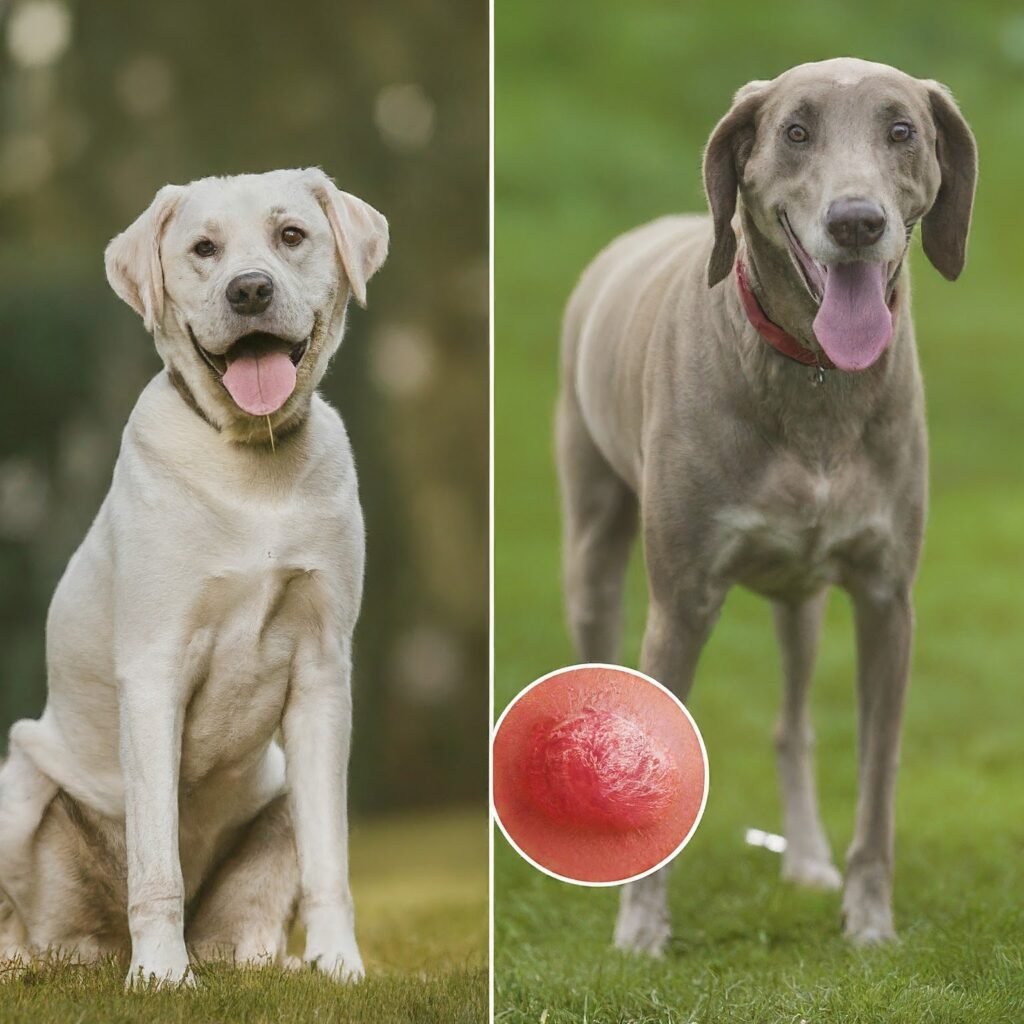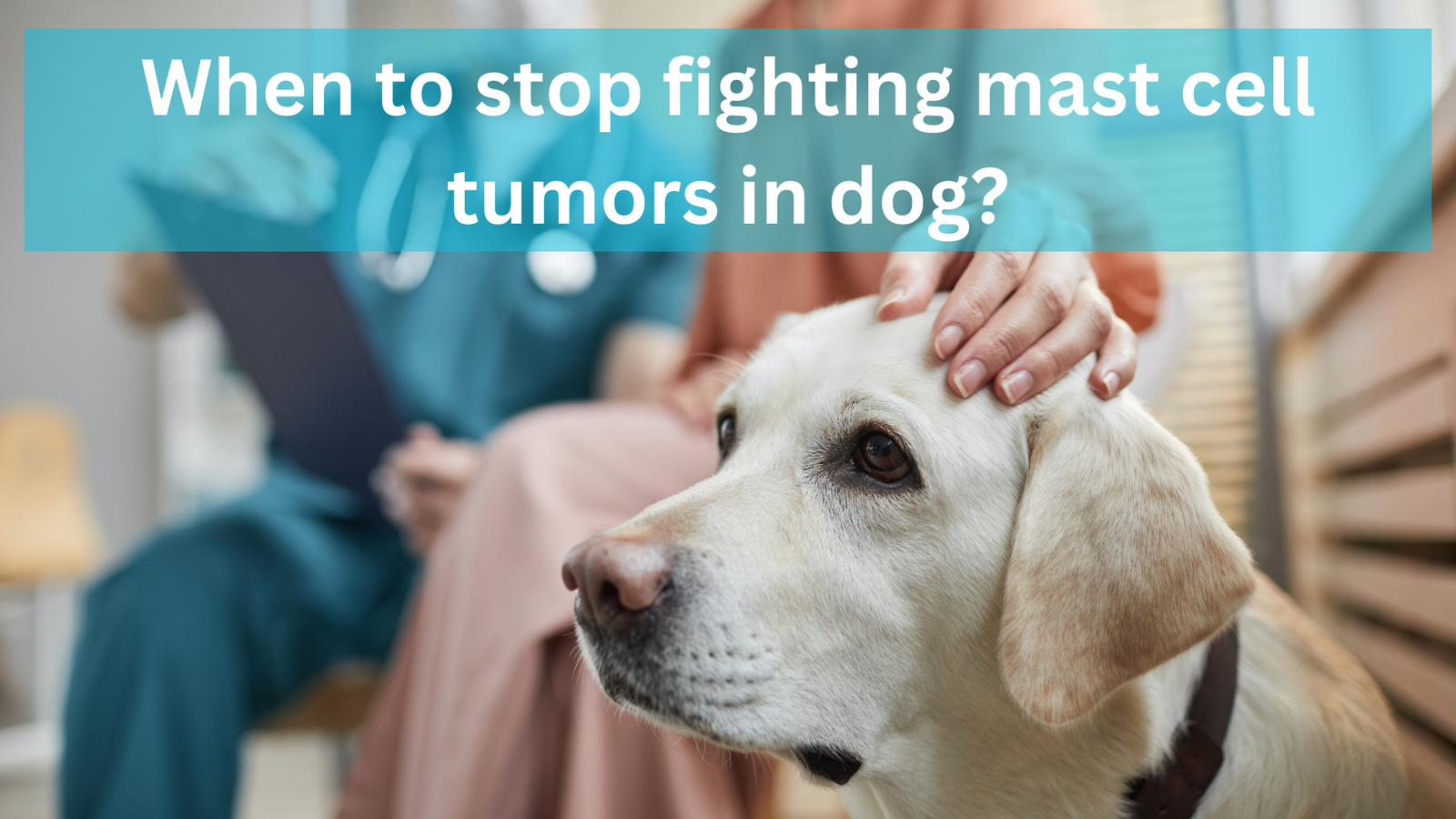Imagine finding a lump on your beloved dog. A trip to the vet confirms your worst fear – a mast cell tumor.
These tumors, while not always a death sentence, can be a complex issue for dog owners. Mast cell tumors can vary greatly in their aggressiveness, making treatment decisions incredibly difficult.
This blog post will equip you with the knowledge you need to navigate this challenging situation.
We’ll explore what mast cell tumors are, the factors influencing treatment decisions, and resources to help you prioritize your furry friend’s well-being.
Understanding Mast Cell Tumors

Deep within your dog’s body lies a network of immune system soldiers called mast cells. These tiny warriors release chemicals to fight allergies and infections.
Unfortunately, sometimes these mast cells turn rogue and form tumors. These mast cell tumors can appear anywhere on your dog’s body, from their skin to their internal organs.
The severity of the situation depends on several factors. The tumor’s location can impact treatment options and potential side effects. Size matters too, with larger tumors generally indicating a more advanced stage.
Most importantly, the tumor’s grade, which reflects its aggressiveness, plays a crucial role in determining the best course of action.
The lower the grade (1 or 2), the slower the growth rate and the better the prognosis. However, higher-grade (3) tumors are more aggressive and require a more intensive approach.
Understanding these factors is vital for navigating the emotional rollercoaster of treatment decisions. In upcoming section, we’ll delve into the key considerations when deciding whether to fight or find comfort for your furry friend.
Symptoms to Watch For

While mast cell tumors can sometimes appear with no outward signs, there are several symptoms you should watch for in your dog:
- Lumps or bumps on the skin: This is the most common symptom, and the lumps can vary in size, shape, and color.
- Recurring skin infections: The chemicals released by mast cell tumors can disrupt the skin’s natural defenses, making your dog more prone to infections.
- Digestive issues: Vomiting, diarrhea, and loss of appetite can all be signs of mast cell tumors, especially if they are located in the digestive tract.
- Difficulty breathing: If the tumor is located near the lungs or trachea, your dog may have trouble breathing.
- Lethargy: A general lack of energy and decreased interest in activities can indicate a mast cell tumor or its impact on your dog’s health.
If you notice any of these symptoms in your dog, it’s crucial to schedule an appointment with your veterinarian for a thorough examination. Early detection and diagnosis are essential for maximizing treatment options and improving your dog’s prognosis.
When to stop fighting mast cell tumors in dog?

The decision of whether to continue or stop treatment for a mast cell tumor is deeply personal and requires careful consideration.
There’s no single “right” answer, and the best course of action will vary depending on your dog’s unique situation.
Here are the key factors to consider when making this difficult choice:
A. Tumor Progression:
- Growth Rate: Is the tumor growing rapidly, or has it remained stable for a while? A rapidly growing tumor may require more aggressive treatment, while a slow-growing one might be manageable with less intensive approaches.
- Spread: Has the tumor spread to other organs? Widespread tumors are generally more challenging to treat and may have a poorer prognosis.
B. Treatment Side Effects:
- Comfort Level: Is the treatment causing your dog significant pain or discomfort? Certain treatments like chemotherapy can have side effects that impact your dog’s quality of life.
- Quality of Life: Is your dog still happy and enjoying life’s activities, or is the treatment significantly impacting their well-being?
C. Your Dog’s Well-Being:
- Enjoyment of Life: The most important factor is your dog’s happiness and overall well-being. If treatment is causing undue suffering, prioritizing comfort might be the best choice.
Open and honest communication with your veterinarian is crucial during this process. They can provide personalized guidance based on your dog’s specific case and help you weigh the potential benefits and drawbacks of each treatment option.
Prioritizing Your Dog’s Comfort
Throughout your dog’s journey with a mast cell tumor, their comfort and well-being should always be the top priority.
Treatment is a powerful tool, but it’s not the only consideration. Imagine your dog after a long walk in the park, their tail wagging with pure joy. That’s the feeling you want to strive for, even when facing difficult decisions.
While treatment can offer valuable time and improved quality of life, there are situations where stopping treatment might be the most compassionate choice.
In cases of advanced tumors with rapid spread or when treatment causes significant discomfort, prioritizing comfort may be the best course of action.
This doesn’t mean giving up hope; it means focusing on making your dog’s remaining days as comfortable and happy as possible.
Resources for Support
Making decisions about your dog’s health can be overwhelming, but you don’t have to go through this alone. Here are some resources available to support you:
A. Veterinarian: Your Trusted Guide
Your veterinarian is your most valuable resource. They can provide personalized guidance based on your dog’s specific diagnosis, stage, and overall health.
Don’t hesitate to ask questions, discuss treatment options in detail, and express your concerns about potential side effects and their impact on your dog’s comfort.
A good veterinarian will work with you to create a treatment plan that prioritizes both fighting the disease and maintaining your dog’s quality of life.
B. Online Communities: Finding Strength in Numbers
Online communities like Reddit forums dedicated to mast cell tumors in dogs can be a great source of support.
Connecting with other dog owners who have faced similar situations allows you to share experiences, ask questions, and gain valuable insights.
These communities can offer emotional support and a sense of understanding during a challenging time.
C. Grade 3 Mast Cell Tumor Prognosis: Understanding Aggressiveness
As mentioned earlier, Grade 3 mast cell tumors are the most aggressive type. The prognosis for these tumors varies depending on individual factors, but generally, they require more intensive treatment and may have a shorter lifespan. Your veterinarian can provide a more specific prognosis based on your dog’s unique case.
Remember, there’s no single answer when it comes to treating mast cell tumors. The best course of action depends on your dog’s specific situation and your priorities.
By prioritizing your dog’s comfort, utilizing available resources, and working closely with your veterinarian, you can navigate this difficult journey with confidence and love.
FAQ’S
How are mast cell tumors diagnosed?
Diagnosis typically involves a combination of physical examination, fine-needle aspirate (collecting cells with a thin needle), and potentially a biopsy (removal of a tissue sample) for analysis.
What are the treatment options for mast cell tumors?
Treatment options vary depending on the tumor’s location, size, and grade. They can include surgery, chemotherapy, radiation therapy, or a combination of these approaches.
How long can a dog live with a mast cell tumor?
Prognosis depends heavily on the tumor grade and other factors. Generally, lower-grade tumors have a better prognosis than higher-grade ones.
How can I ensure my dog’s comfort during treatment?
Discuss pain management options with your veterinarian. Prioritize activities your dog enjoys and create a calm, comfortable environment at home.
When should I consider stopping treatment?
There’s no single answer. Consider factors like tumor progression, treatment side effects, and most importantly, your dog’s overall well-being and quality of life. Discuss this openly with your veterinarian.
My dog has a lump, but isn’t showing any other symptoms. Could it be a mast cell tumor?
Yes, mast cell tumors can sometimes appear without additional symptoms. It’s crucial to schedule a vet visit for any lumps or bumps, regardless of other signs.
My dog keeps scratching the same spot. Is that a sign of a mast cell tumor?
Itching can be a symptom of mast cell tumors, but it can also have other causes. See your veterinarian for a diagnosis.
What are the side effects of surgery for mast cell tumors?
Side effects depend on the location and size of the tumor. They can include pain, swelling, and infection. Discuss potential side effects with your veterinarian.
Is chemotherapy always necessary for mast cell tumors?
No, not all mast cell tumors require chemotherapy. The decision depends on the tumor’s grade and other factors. Your veterinarian will recommend the most appropriate treatment plan for your dog.
What can I expect after my dog’s mast cell tumor removal?
The recovery process and long-term outlook depend on the specific case. Your veterinarian will provide detailed information on what to expect after surgery.
How can I tell if the treatment is improving my dog’s quality of life?
Look for signs like increased energy, improved appetite, and a renewed interest in activities they enjoy. Pay attention to any changes in behavior or discomfort that might indicate treatment side effects.
Also Read : Can Dogs Smell Underwater? Dive Deep into a Dog’s Super Sniffer
Also Read : Can Dogs Have Cinnamon Rolls? Safety Tips and Potential Benefits
